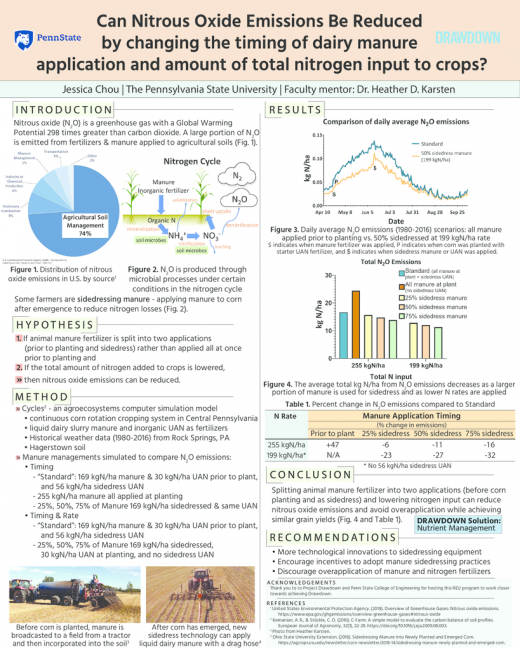A portion of animal manure and inorganic urea ammonium nitrate (UAN) fertilizer applied to farmland as fertilizer can emit as the greenhouse gas, nitrous oxide (N 2 O), which has a warming potential 298 times greater than carbon dioxide. A potential opportunity to reduce nitrogen losses to the environment is improving the application timing and amount of fertilizers. In northeastern U.S., livestock manure is typically applied prior to corn planting in spring, making manure nutrients vulnerable to environmental losses. Recent innovations in manure application technology allow for manure application in early stages of corn growth. Research focused on this improved synchronization of manure fertilizer application with crop uptake to reduce N 2 O emissions is limited. In this study, we used Cycles, an agro-ecosystem computer model, to simulate the N 2 O emissions from a continuous corn field managed with different fertilizer application scenarios in Rock Springs, Pennsylvania. The model uses historical weather data from 1980 to 2016 and Hagerstown soil. We found that splitting manure into two applications and lowering total nitrogen inputs reduced N 2 O emissions. When half of the manure was applied prior to planting and half applied as sidedress manure without sidedress UAN fertilizer, annual cumulative N 2 O emissions reduced by 27% while achieving similar corn yields. In addition, applying 50% more manure N at planting emitted 47% greater annual cumulative emissions. These results can encourage more manure application technological innovations, financial incentives to promote adoption of sidedressing manure, and discourage manure and nitrogen applications that exceed crop N requirements to reduce N 2 O emissions.
Day
Monday Poster Session
Related Conference Themes
Food


